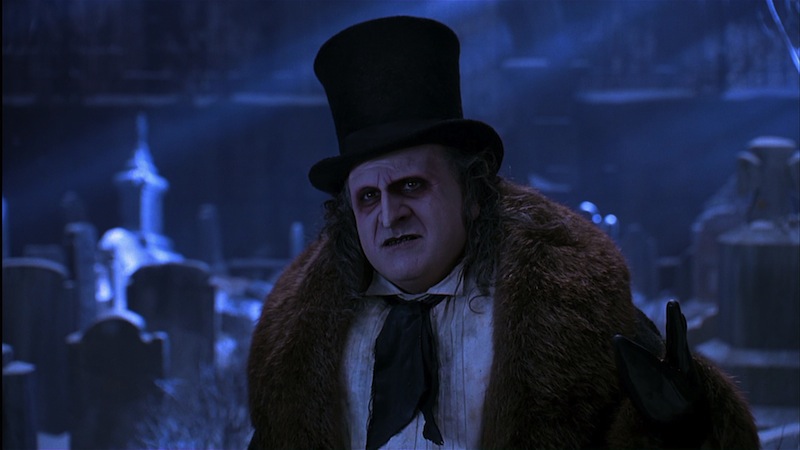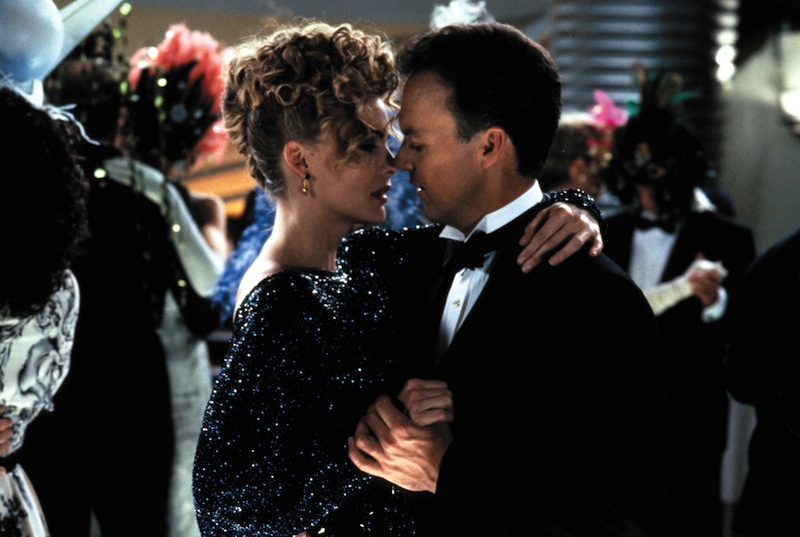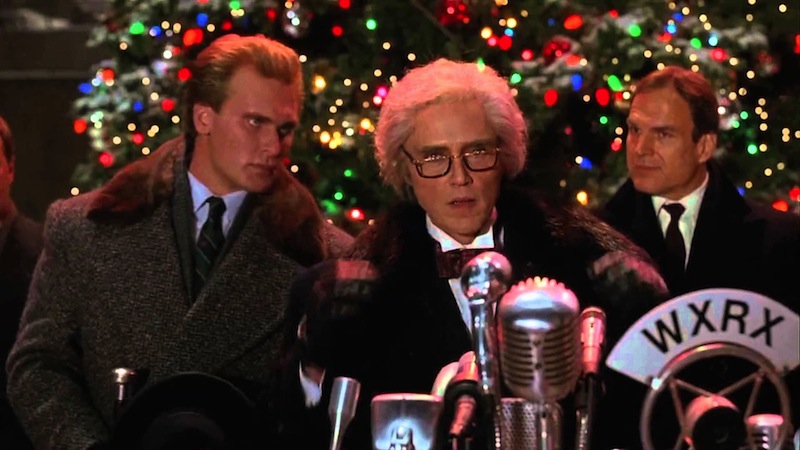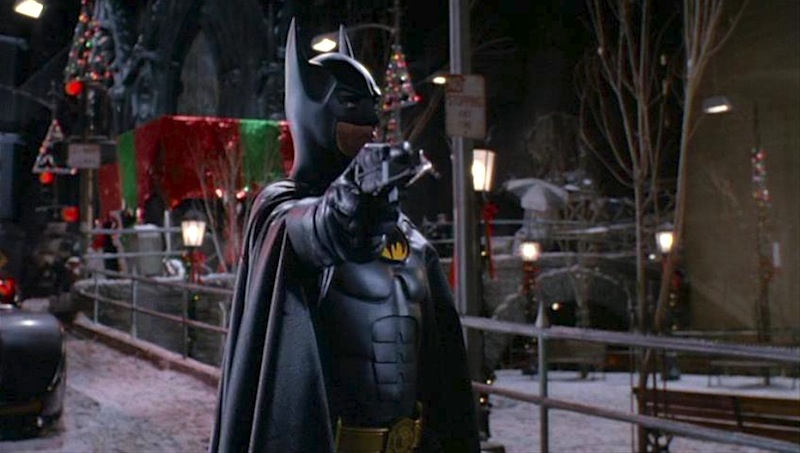This year marked the 75th anniversary of Batman, so it seems only fitting to close out the year with Tim Burton’s classic Christmas movie, Batman Returns.
When it was released back in the summer of 1992, the movie was greeted as an oddball failure. Sure, it made enough money to warrant another sequel, but it suffered a sharp drop off at the box office after a big opening weekend and it faced a backlash from audiences who found it too dark, too sexual, and too weird. One can hardly blame the good people of ’92, though. Batman Returns is indeed one the strangest blockbusters ever made.
Will it be controversial for me to say that Batman Returns is easily the most interesting movie ever made from the character created by Bill Finger and Bob Kane back in 1939? While Christopher Nolan adapted Gotham City in quasi-realistic style that evoked the anxieties and hypocrisies of the post-9/11 world (all of Nolan’s villains are ideological terrorists of one kind or another), Burton took the character in a more deliberately Gothic direction that allowed for more variation and interpretation. Batman Returns is gruesome but humane, dark but funny. There is simply no other movie like it.

The story starts with the birth of nasty little Oswald Cobblepot, a freak of nature who, soon after his nativity, is hurled into the sewers of Gotham City by his horrified parents. 33 years later (note, Jesus was thirty-three at the time of his Crucifixion) Cobblepot returns to the surface to terrorize the city as The Penguin. His reappearance coincides with the death and resurrection of Selina Kyle, a mousey secretary who is murdered by corrupt businessman Max Shreck, only to be reborn, by the vaguely occult intervention of apparently every feline in the city, as Catwoman. The criminal exploits of these two freaks bring out Gotham’s resident freak protector—Bruce Wayne, aka The Batman. (“Is it ‘The Batman’” Selina asks, “or just ‘Batman’?”)
Batman Returns is a Christmas movie with roots in Charles Dickens, Bram Stoker, and Edward Gorey. Like Dickens’s late Christmas novella The Haunted Man and the Ghost’s Bargain, it is a story fascinated by doubles. Bruce Wayne and Oswald Cobblepot are both rich-boy orphans turned freaks. “If his parents hadn’t eighty-sixed him,” Shreck tells Bruce, “you two might have been bunkies at prep school.” Bruce and Shreck seem to be the only high-powered businessmen in Gotham. Shreck is one part Mr. Potter from It’s A Wonderful Life and one part horror movie villain—his name is a deliberate homage to German actor Maximilian Schreck, who played Count Orlock in Nosferatu.

And the doubling of Bruce and Selina—the “problems with duality” as Selina calls it—is the very basis of their relationship. While the Vicki Vale romance in Batman always felt forced, in large part because Vicki Vale has always been little more than a lazy knockoff of Lois Lane, the romance between Bruce and Selina feels more like the authentic meeting of minds of two social outcasts. In Batman Returns, the dance between Batman and Catwoman is the emotional heart of the film. It takes the film’s emphasis on doubling and makes it explicit. “We’re the same,” Bruce tells Selina, in a showdown that is more emotional than violent, “split right down the middle.”
The film’s Gotham City is a gorgeous creation, as artificial as Oz or the landscapes in Burton’s own The Nightmare Before Christmas. The ice-caked gothic production design by Bo Welch recalls his work on Edward Scissorhands and Beetlejucie. Everything here works, from Gotham Plaza’s mammoth fascist-era architecture to Penguin’s World’s Fair-inspired lair. Welch also gives us hands down the best Wayne Manor, which is presented as a spooky castle with twelve foot long couches sitting in front of a massive fireplace right out of Citizen Kane.

To match the tone of the set design, Burton gets big performances from his actors. Danny Devito goes all in on The Penguin and gives what must be the single most grotesque leading performance ever seen in a movie of this size. And I mean grotesque in its precise meaning. Oswald Cobblepot is a grotesquery—funny and lustful and ghoulish but also strangely sympathetic, a freakish Christ figure for this twisted Christmas fable.
Michelle Pfeiffer’s Catwoman is another outcast, a lonely, quirky nerd all alone in the big city and invisible except for her utility to callous, powerful men. “How can you be so mean to someone so meaningless?” she asks Shreck. After her resurrection, Selina returns to her apartment—a pink monstrosity of dollhouses and stuffed animals, a little girl’s idea of a woman’s apartment—and tears the place apart. The scene of Pfeiffer stabbing stuffed animals down a garbage disposal while she licks her lips and cackles like a crazy person is a vision of unchecked feminine rage. Her take on Catwoman is aggressively sexual, an angry repudiation of the meek and chaste girl-woman Shreck wantonly murdered.

A quick word about Shreck: Christopher Walken is sometimes overlooked here because he’s the fourth man down on a lineup that includes three comic book characters, but there might not be a funnier, more Walkenesque performance than his Max Shreck. He starts getting laughs as soon as he opens his mouth.
Then, of course, there’s Batman himself, Michael Keaton. The recent comedy/drama Birdman casts Keaton as a washed-up superhero actor trying to make a comeback in a serious play on Broadway. It’s a good movie, and Keaton is beyond good in it, but one hopes that it doesn’t reflect the actor’s feelings about his work in Batman. His performance here is terrific. His Bruce Wayne is not the ripped ninja warrior of the Nolan films, he’s a Gothic hero in a castle. We first see him sitting in darkness, in a cavernous hall, waiting to be summoned. We end with him riding away in the snow with Alfred, stroking a black cat, giving the film its wistful last lines, “Merry Christmas, Alfred. Good will toward men…and women.”

If Nolan tried to place Batman in a jazzed up version of the real world, Burton tried to place him in a world that could only exist in the movies. There’s no intrinsic superiority to either approach, but it’s important to note the difference. Nolan’s somber and self-serious Dark Knight films fervently deny the Caped Crusader’s innate goofiness, the intrinsic absurdity of a comic book billionaire dressing up in a cape to have fistfights with a guy called The Penguin. The refreshing thing about returning to Burton’s neo-Gothic approach is that he doesn’t deny the absurd. Instead, he embraces it and contextualizes it within the tradition of the Grotesque, where the darkly absurd is celebrated. Somehow, that mix is just right for the holidays.
Merry Christmas from Gotham City.
Jake Hinkson is the author of the novels Hell On Church Street and The Posthumous Man, as well as the novella Saint Homicide. Read more about him at JakeHinkson.com and his blog, The Night Editor.










